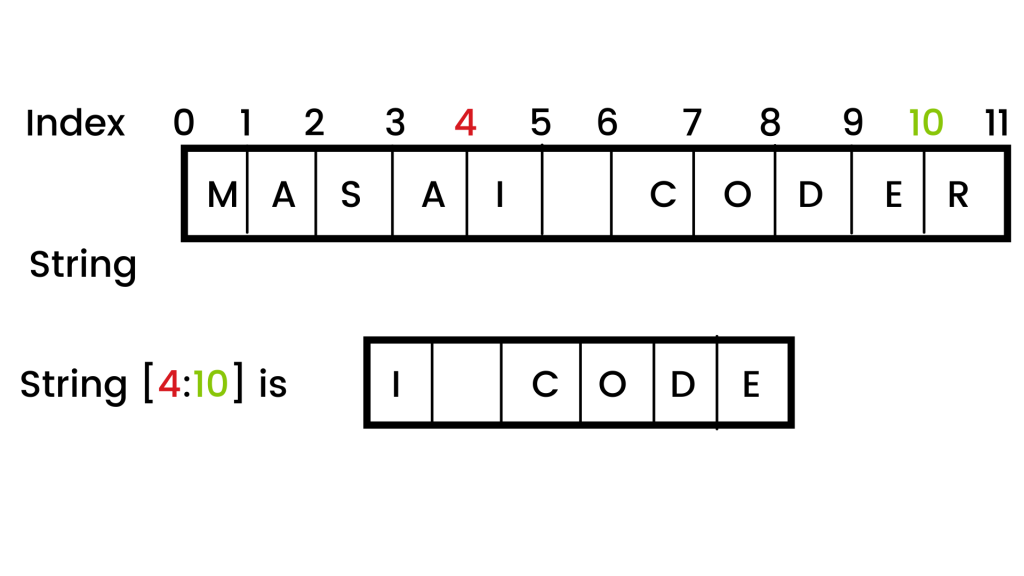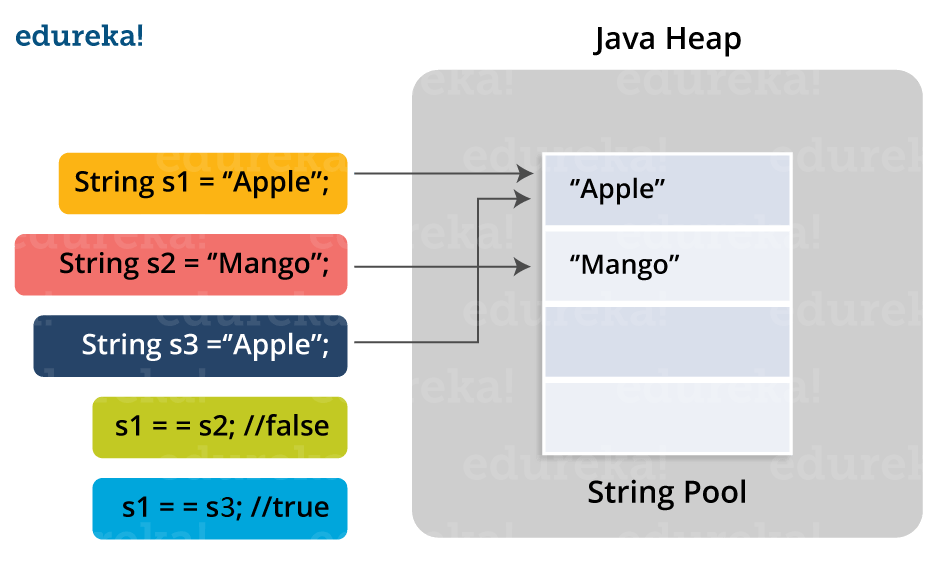Nice Tips About What Is String Coding

Regex Python List Of Strings Design Talk
Decoding the Mystery
1. String Coding Demystified
Ever wondered how computers handle words and sentences? It's not magic, although it can sometimes feel like it! It all comes down to something called "string coding." In essence, string coding is the way computers represent and manipulate text. Think of it as the secret handshake between you and your machine when you're typing away at your keyboard. We're talking about translating human-readable text into a format computers understand (a series of numbers, mostly). And then back again when it needs to show you something on the screen.
Without string coding, your computer wouldn't know what to do with "Hello, World!" It would just be a jumbled mess of abstract concepts. Instead, each letter, each space, even each punctuation mark, gets assigned a numerical value based on a specific coding scheme. These schemes, or "encodings," are like different languages that computers use to talk about text. Some are older, some are newer, and some are better suited for certain tasks than others. It is like humans communicate by having a different language but the purpose is for communication and understanding.
So, next time you're happily typing away, remember that there's a whole behind-the-scenes process happening. Your letters are being translated into numerical codes, processed by the computer, and then translated back into readable text. It's all thanks to the wonderful world of string coding. And isn't it amazing to think about how seamlessly this entire process happen?
The fascinating thing is that this whole system isn't just about basic text. String coding plays a crucial role in everything from displaying web pages with fancy fonts to storing huge databases of customer information. Think of it as the foundation upon which a lot of the digital world is built. It is that integral to this digital world, that is why we have to acknowledge this unsung hero.

The String Data Type In C++ YouTube
A Peek Under the Hood
2. Encoding Standards
Now that we know what string coding is, let's take a quick look at some of the most common "languages" used. You've probably heard of at least one or two of these! ASCII (American Standard Code for Information Interchange) is one of the oldest and most widely used. It's a simple encoding that represents characters using 7 bits, meaning it can only handle 128 different characters. Great for English, not so great for languages with lots of accents or unique symbols.
Then there's UTF-8 (Unicode Transformation Format – 8-bit), which is the reigning champion these days. UTF-8 is a variable-width encoding, meaning it can use between 1 and 4 bytes to represent a character. This allows it to support a massive range of characters, covering nearly every language in the world. Seriously, if you're working with text from different sources, UTF-8 is usually your best bet. The more you know about the languages of encoding, the easier the process of transferring information becomes. Without this, it would be just be a massive error.
Another encoding you might encounter is UTF-16 (Unicode Transformation Format – 16-bit). It uses 2 or 4 bytes per character and is also capable of representing a wide variety of characters, though UTF-8 is generally preferred due to its better compatibility and efficiency for English text. Remember that computers aren't simply understanding English, it is being translated in a way that it can comprehend and manipulate as needed.
These aren't the only encodings out there — you might stumble upon Latin-1, or others depending on the specific systems or data you're dealing with. The key is to be aware that different encodings exist, and that choosing the right one is important for ensuring your text is displayed and processed correctly. And always remember, it's not just about the code but the interpretation of the code.

Why Does String Encoding Matter? (Spoiler
3. The Importance of Accurate Encoding
So, why should you care about any of this? Well, imagine you're trying to open a file that was saved using a different encoding than the one your computer is using. What do you think would happen? The answer is, gibberish! You'd see strange symbols, question marks, and a whole lot of characters that just don't make sense. This is because your computer is trying to interpret the numerical codes using the wrong "language," resulting in a garbled mess.
Incorrect string encoding can lead to all sorts of problems. From displaying web pages with broken characters to corrupting data during file transfers, the consequences can be pretty frustrating. Think about sending an important document to someone, only to have it arrive as a jumbled mess of symbols. Not a great look, right? It's like trying to speak to someone in a language they don't understand — communication breaks down.
Choosing the correct encoding is especially crucial when dealing with data from multiple sources or working with international languages. Web developers, in particular, need to be mindful of encoding to ensure their websites display correctly for users around the globe. Nobody wants to visit a website and see a bunch of squares instead of properly rendered text! So, attention to detail is crucial to avoid these complications.
Moreover, database systems rely heavily on proper string encoding to store and retrieve textual data accurately. Imagine a database filled with customer names and addresses where the characters are all mangled. That would be a disaster! Therefore, it's essential to choose the right encoding from the start and to consistently apply it throughout your systems to avoid these issues. Proper encoding is the foundation for reliable data management.

Data Structures And Algorithms Explained With Examples
String Coding in Action
4. Encoding Impacts in Everyday Tech
Let's bring this down to earth with a few practical examples. Think about sending an email. Your email client needs to encode the text of your message so that it can be transmitted over the internet. If the recipient's email client uses a different encoding, they might see weird characters instead of your intended message. It's usually handled automatically these days, but the encoding is happening behind the scenes. Isn't technology wonderful?
Websites are another great example. When you visit a website, your browser needs to interpret the HTML code, which includes the text content. The website specifies the encoding used, usually UTF-8, to ensure that the text displays correctly in your browser, regardless of your operating system or language settings. Imagine browsing a website where half the text is in Wingdings! Thanks to proper string coding, you probably won't have to deal with that.
Programming languages themselves also rely on string coding. When you write code that manipulates text, the programming language needs to understand how those characters are represented. Many modern programming languages default to UTF-8, making it easier to handle text from different sources. Try printing special characters in different language, that would be fun!
Even file names are subject to string encoding. If you've ever had a file name display incorrectly after transferring it between different operating systems, it's likely due to an encoding issue. It is like your file name is having a tough time trying to communicate with each other. Properly configured systems and applications handle this transparently most of the time, but it's a good example of where encoding comes into play in unexpected places.

Troubleshooting Encoding Issues
5. Decoding Errors and Solutions
Okay, so what do you do if you encounter an encoding problem? First, identify the encoding that's causing the issue. If you know the encoding of the file or data source, you can specify it explicitly when opening or processing the file. Many text editors and programming environments allow you to choose the encoding. Sometimes, all it takes is changing one setting to fix a whole host of display issues.
If you're unsure of the encoding, you can try using a tool to detect it automatically. There are libraries and utilities available in most programming languages that can analyze the text and guess the encoding. However, these tools aren't always perfect, so it's best to double-check the results. Always remember to take a second look at what you are translating.
When dealing with web pages, check the `charset` attribute in the HTML `` tag. This tag specifies the encoding that the browser should use to display the page. Make sure it's set to UTF-8 for the best compatibility. If the `charset` attribute is missing or incorrect, your browser might misinterpret the text. As a pro tip, always check the attribute of the code, it will make your job easier!
Finally, if you're working with a specific programming language, consult the documentation for the language's string handling functions. Most languages provide functions for converting between different encodings, which can be useful for fixing encoding issues on the fly. These functions act like translators, bridging the gap between different "languages." Don't worry, with the right tools, it will be easier to decode those errors!

FAQ
6. Your Burning Questions Answered
Still got questions? No problem! Here are some common FAQs about string coding:
Q: What's the difference between encoding and encryption?A: Encoding is about representing data in a different format, usually for compatibility or standardization. Encryption, on the other hand, is about protecting data by making it unreadable to unauthorized parties. Think of encoding as putting your message in a different language so everyone can read it, and encryption as putting your message in a secret code only you and your friend know.
Q: Is UTF-8 always the best encoding to use?A: In most cases, yes! UTF-8 is widely supported and can handle a vast range of characters. However, there might be specific situations where other encodings are more appropriate, such as when dealing with legacy systems that only support ASCII. But for general use, UTF-8 is usually your best bet.
Q: How do I convert a file from one encoding to another?A: Many text editors and command-line tools can convert files between different encodings. For example, in Linux, you can use the `iconv` command. Many programming languages also have libraries for encoding conversion. It all depends on your specific needs and technical comfort level.